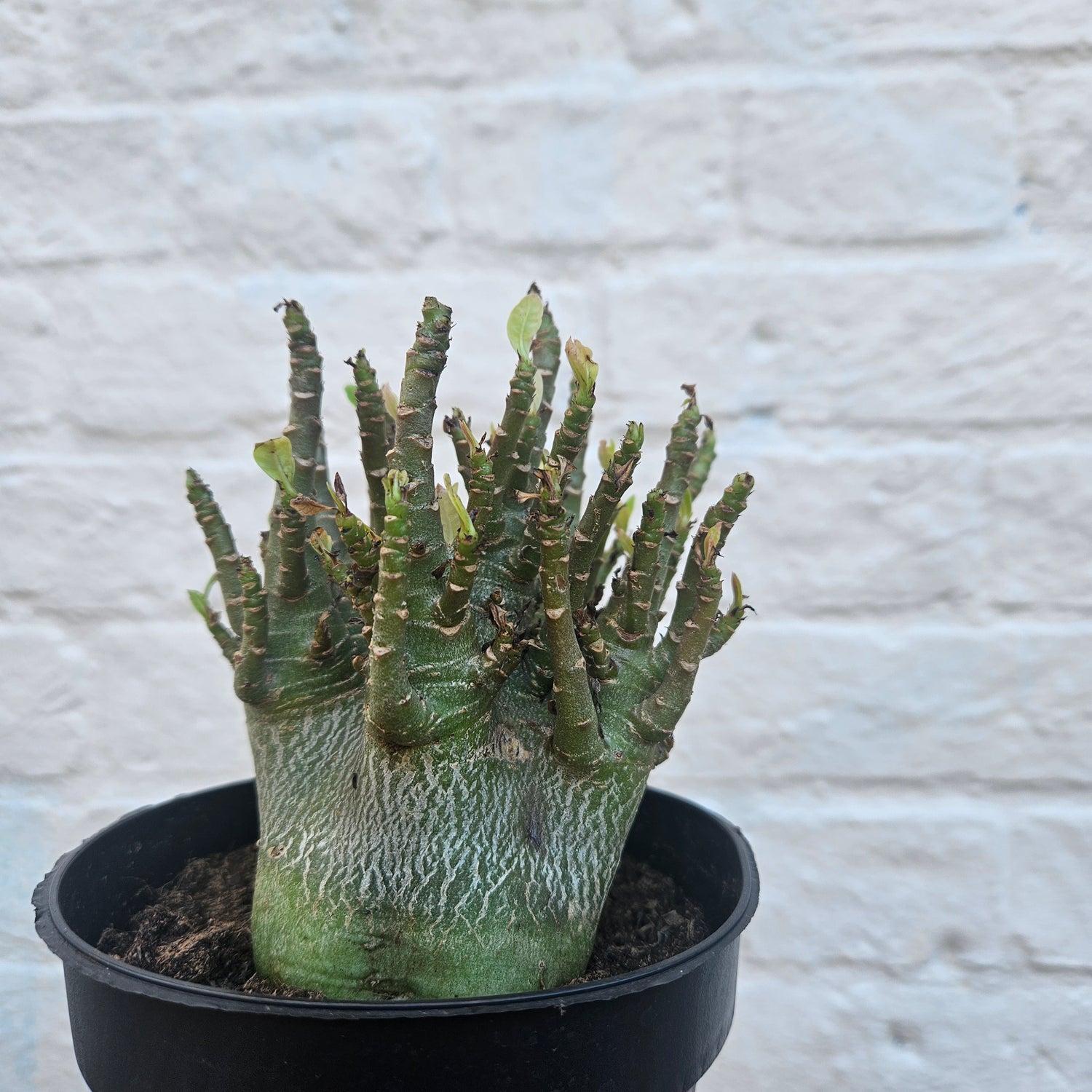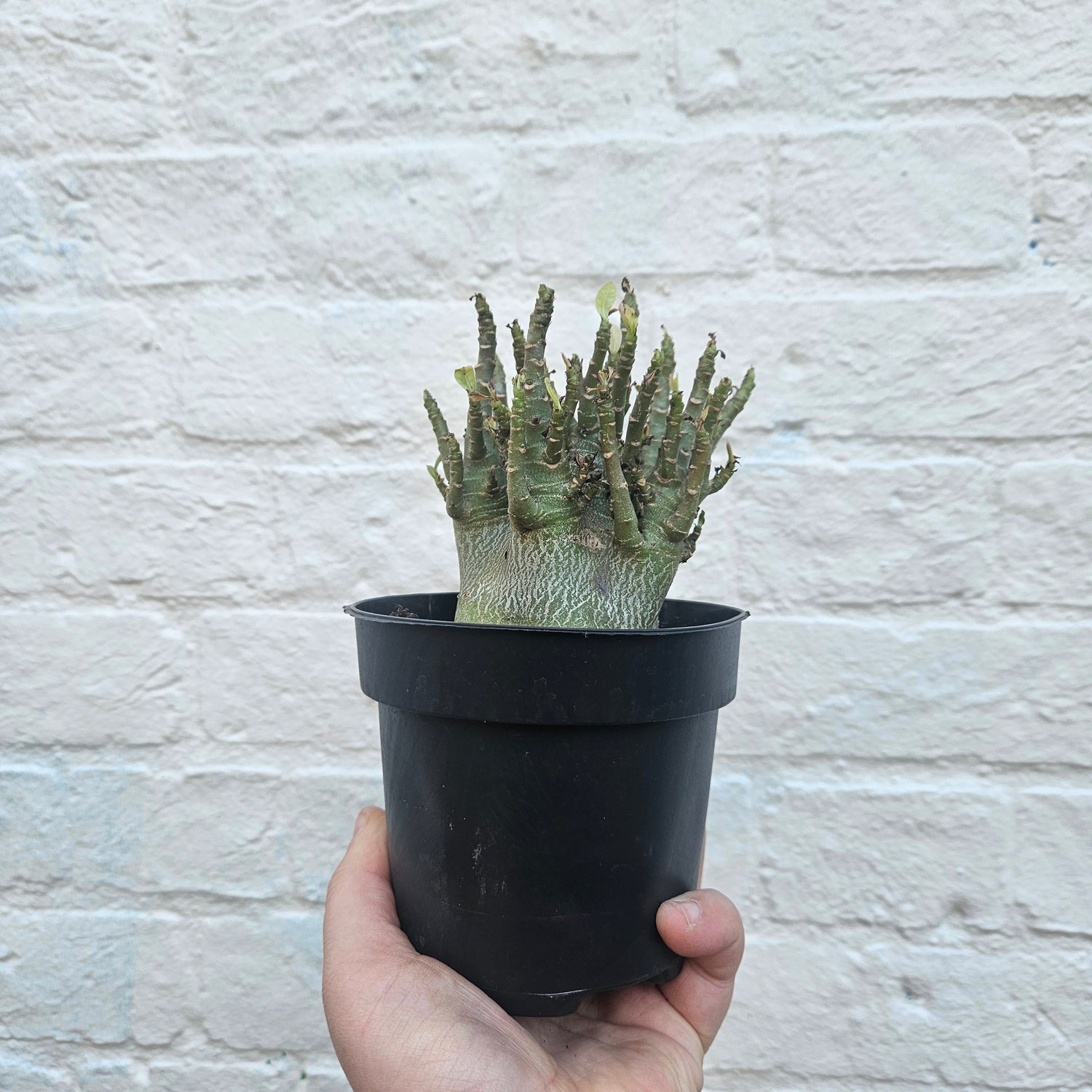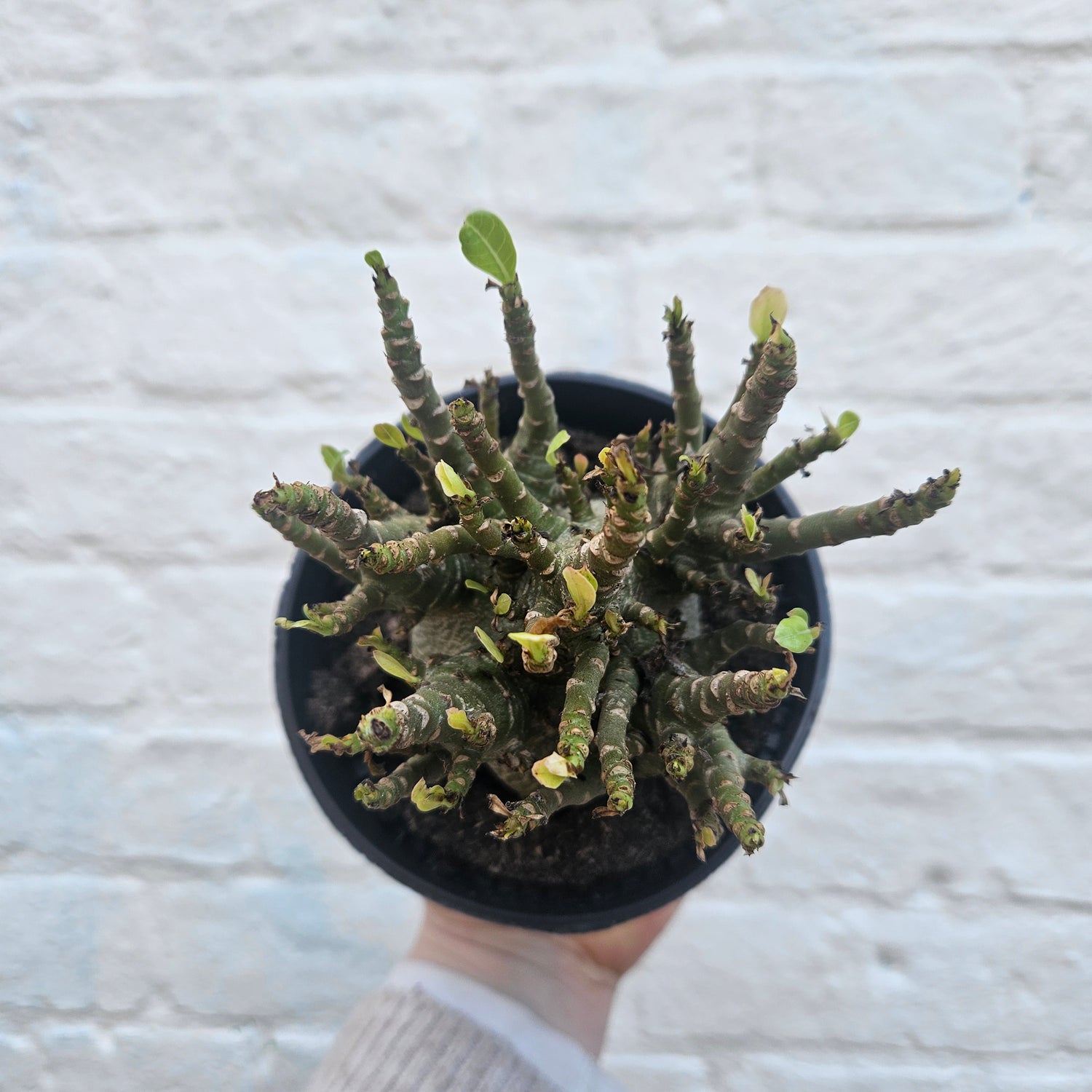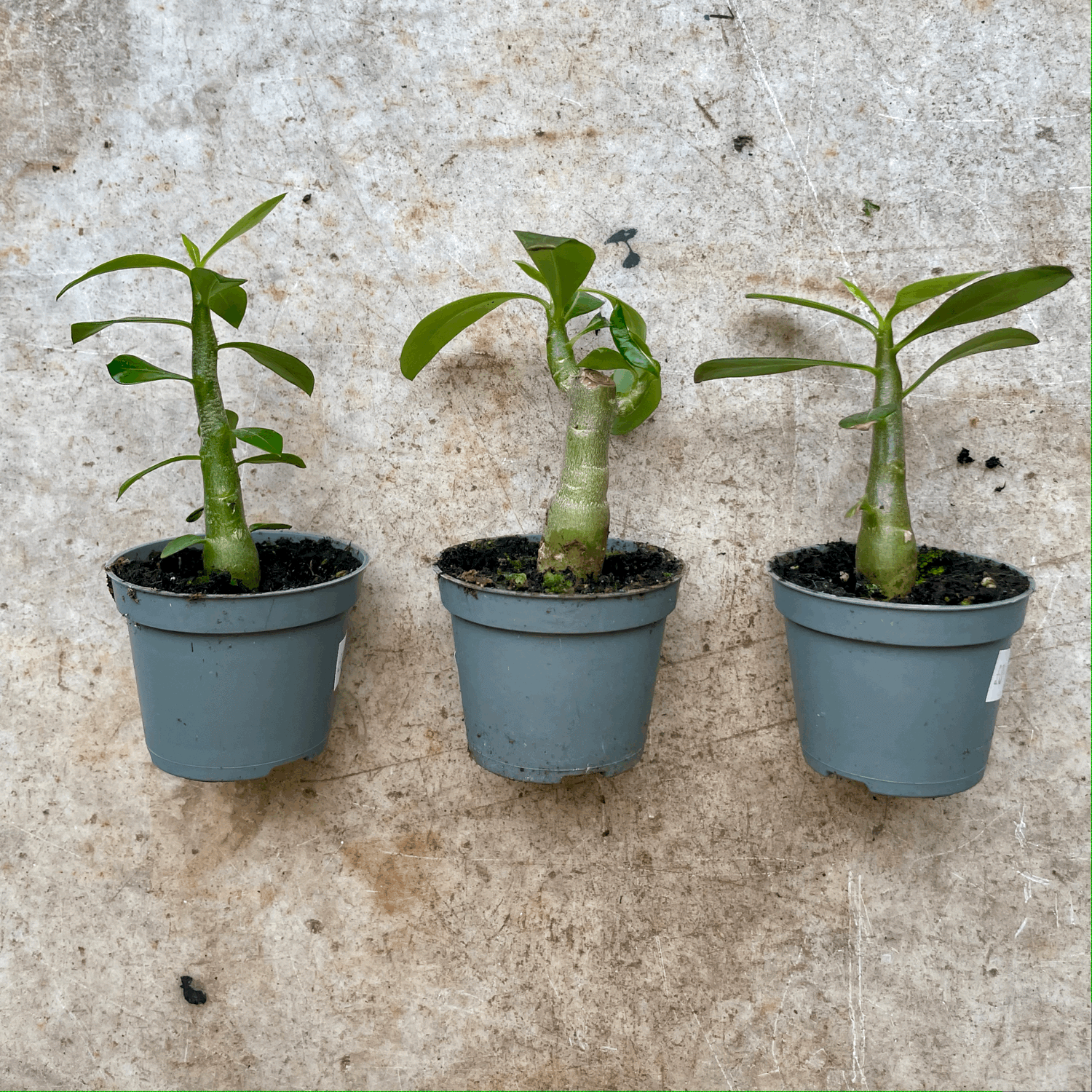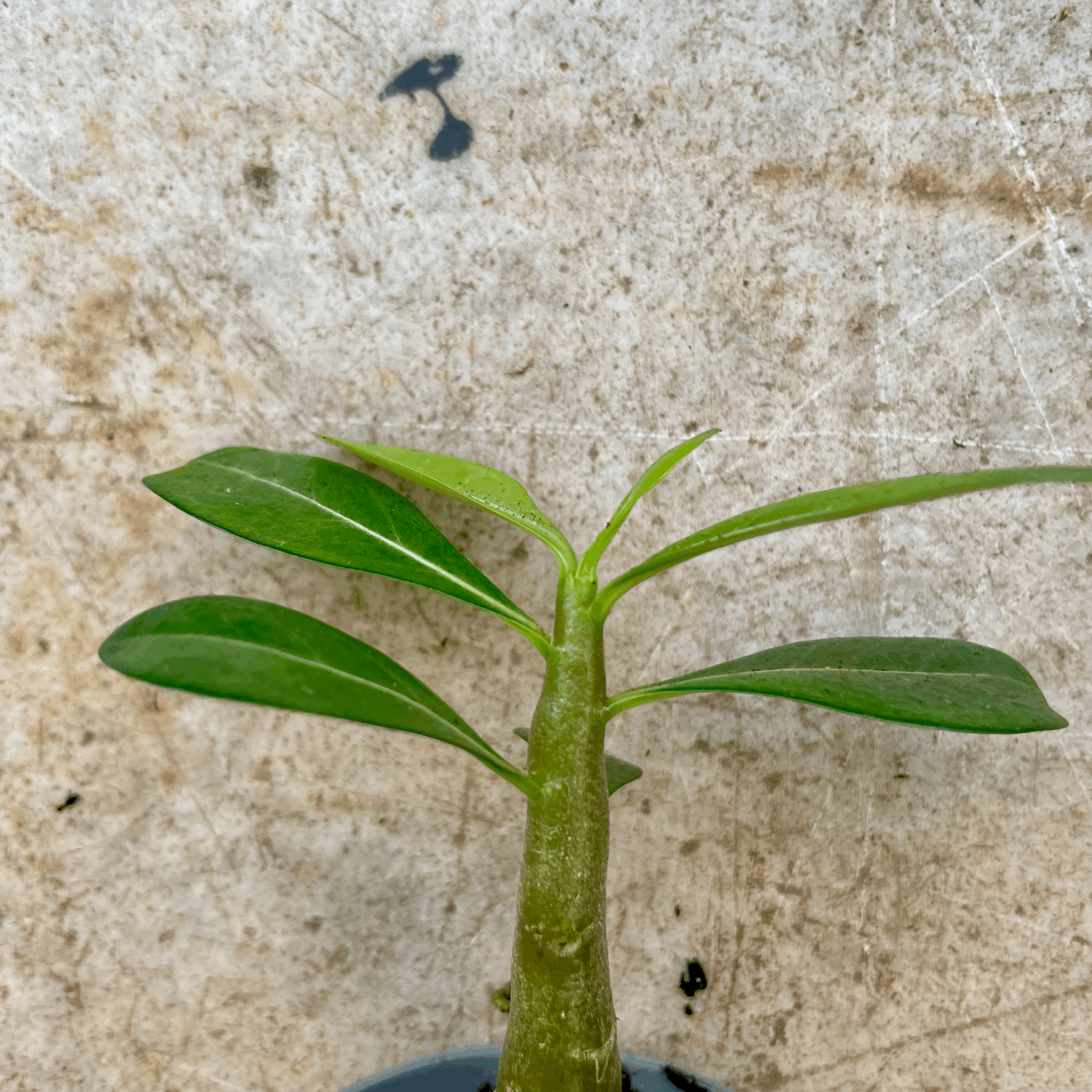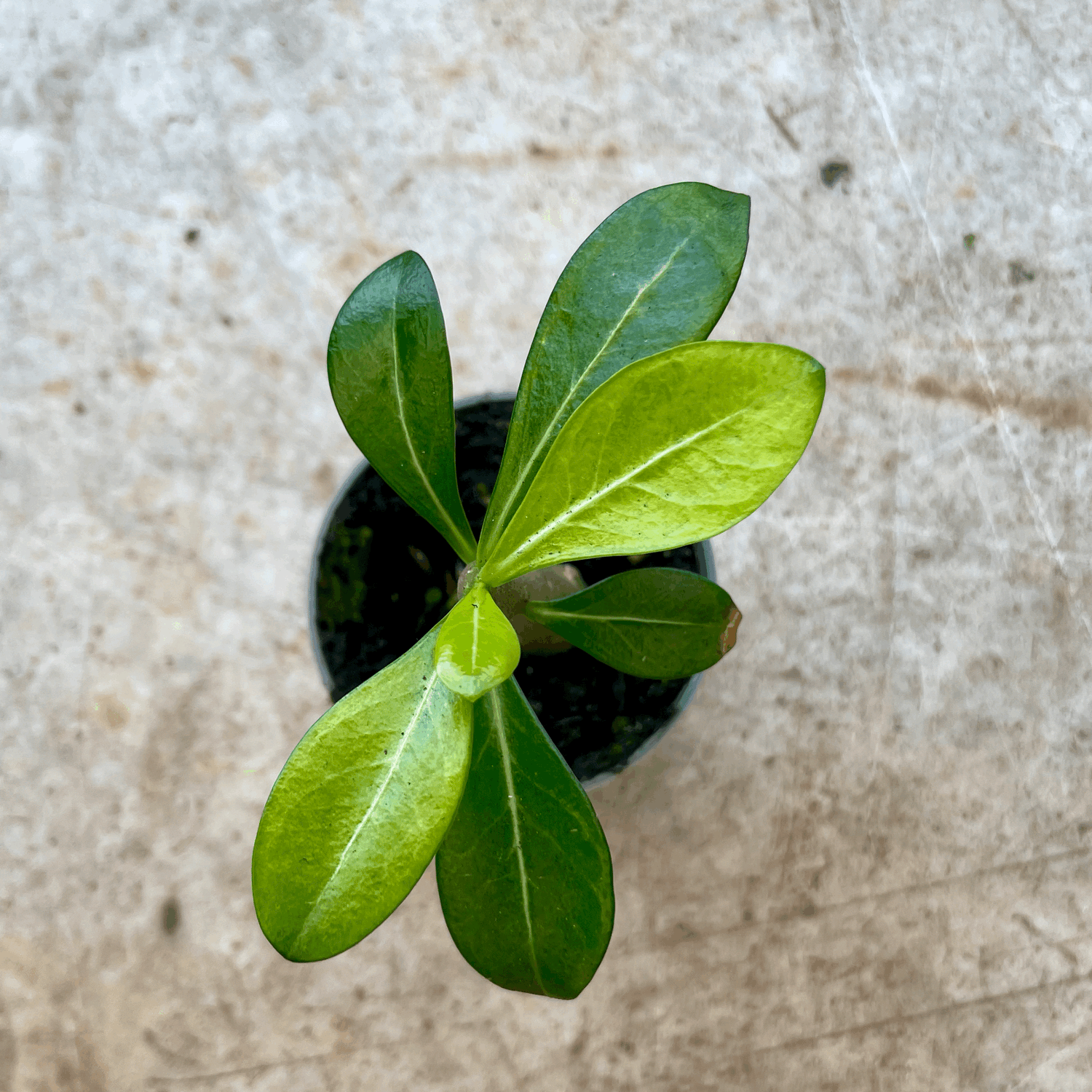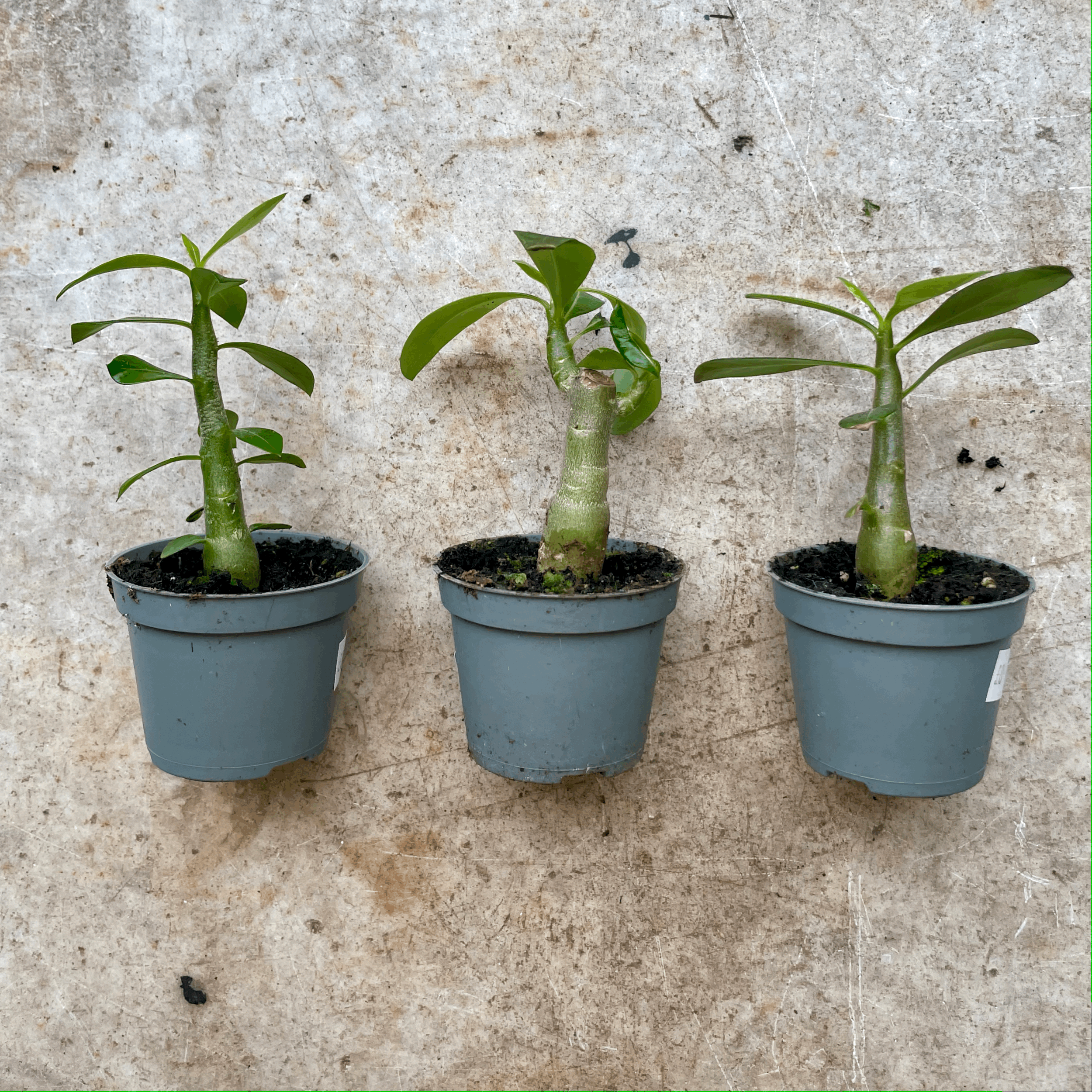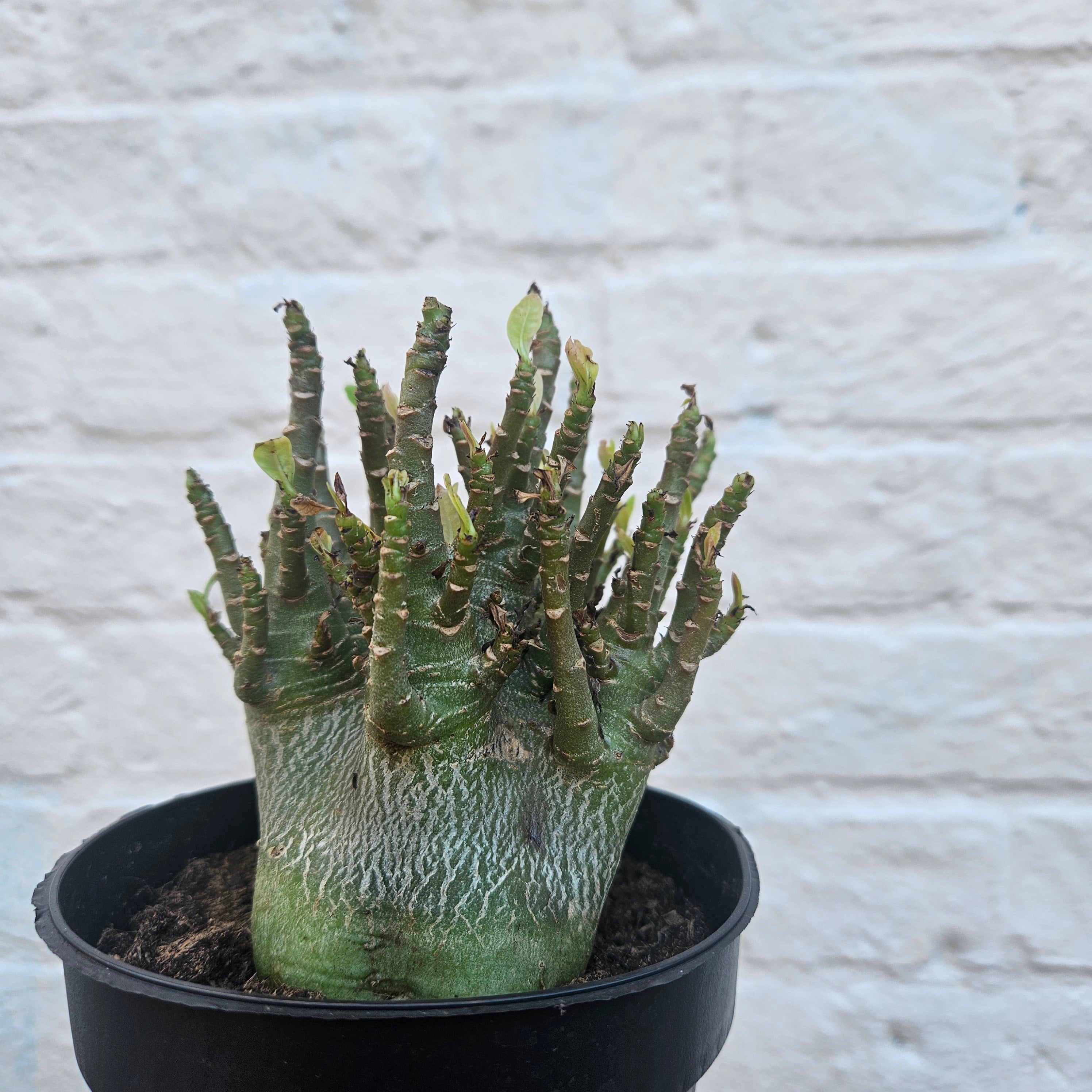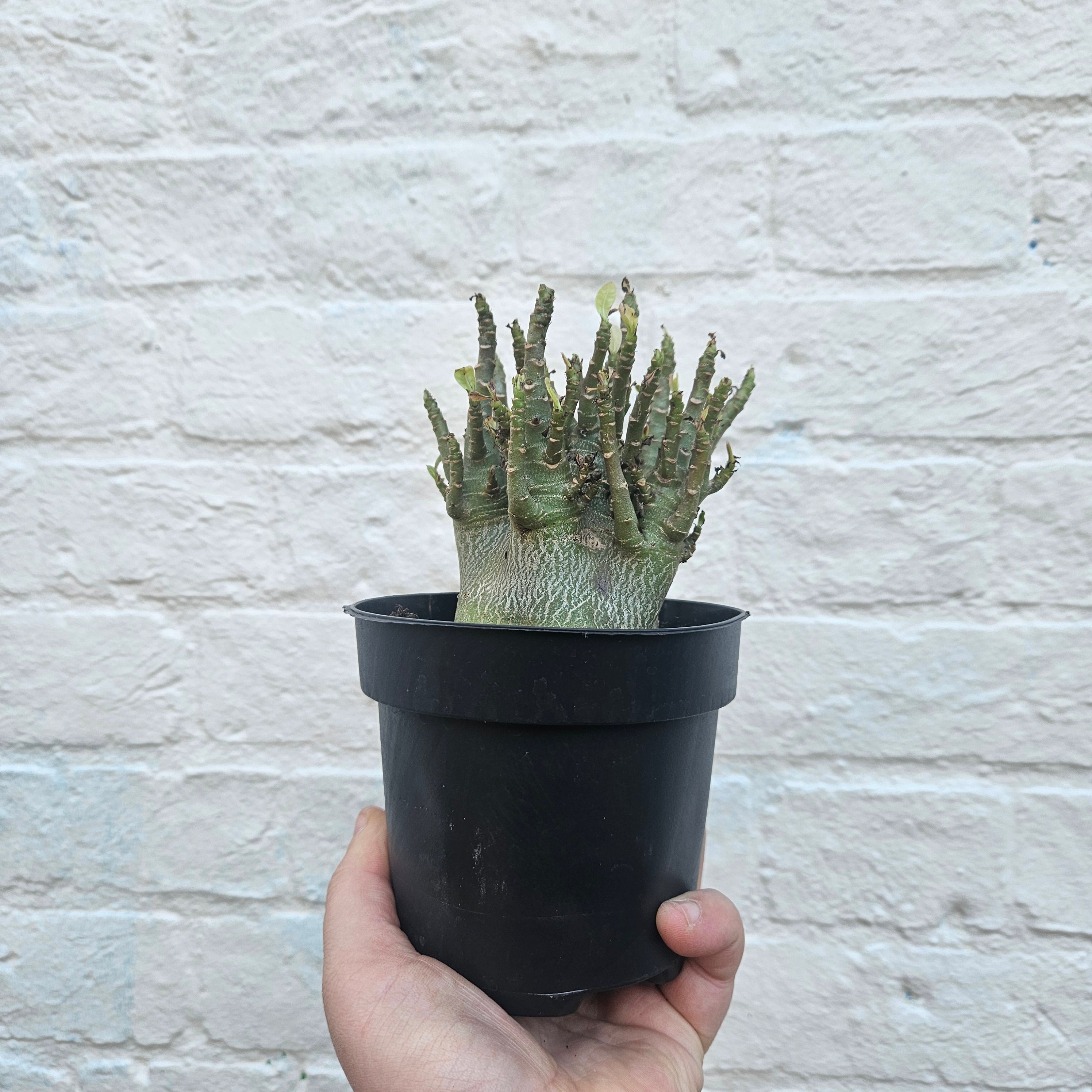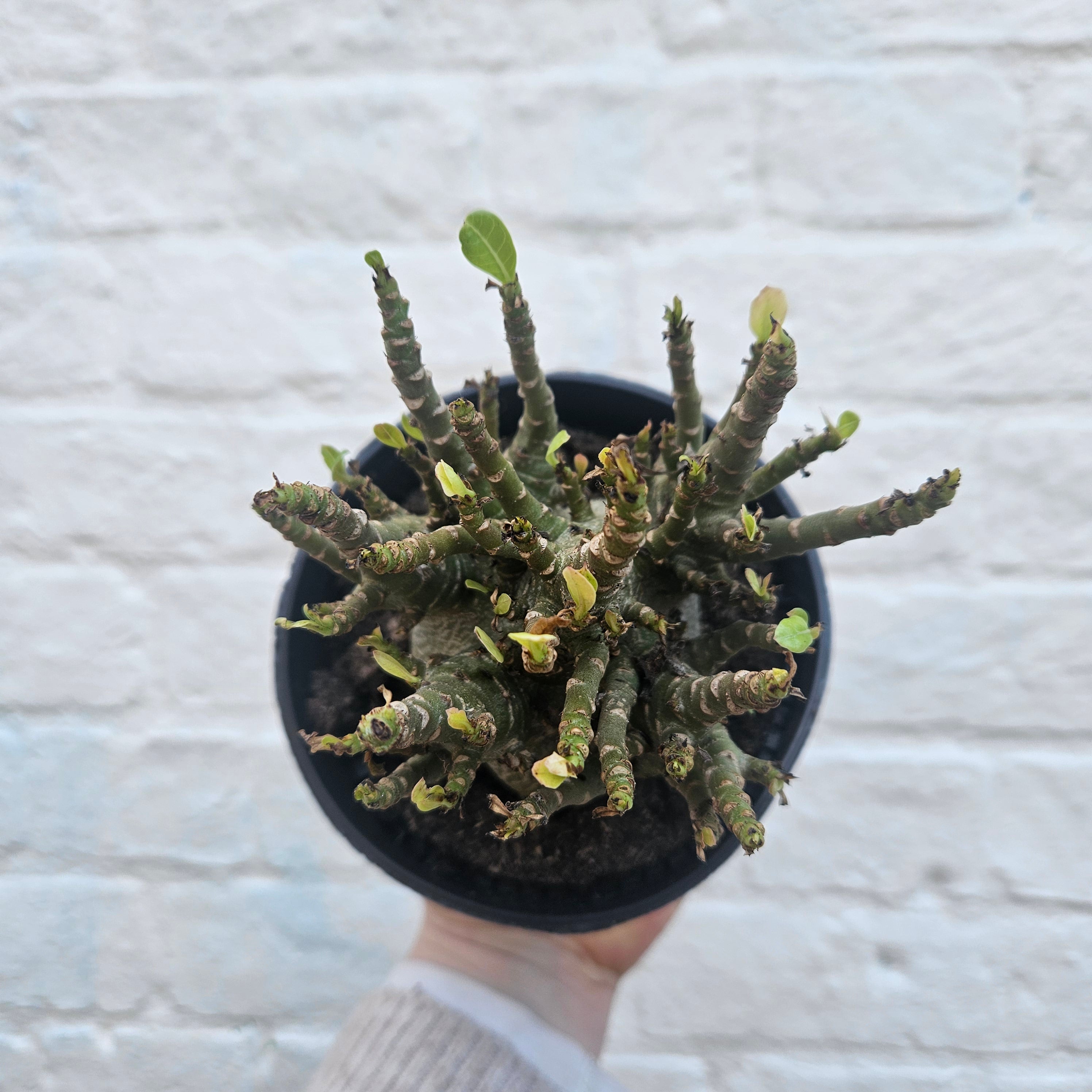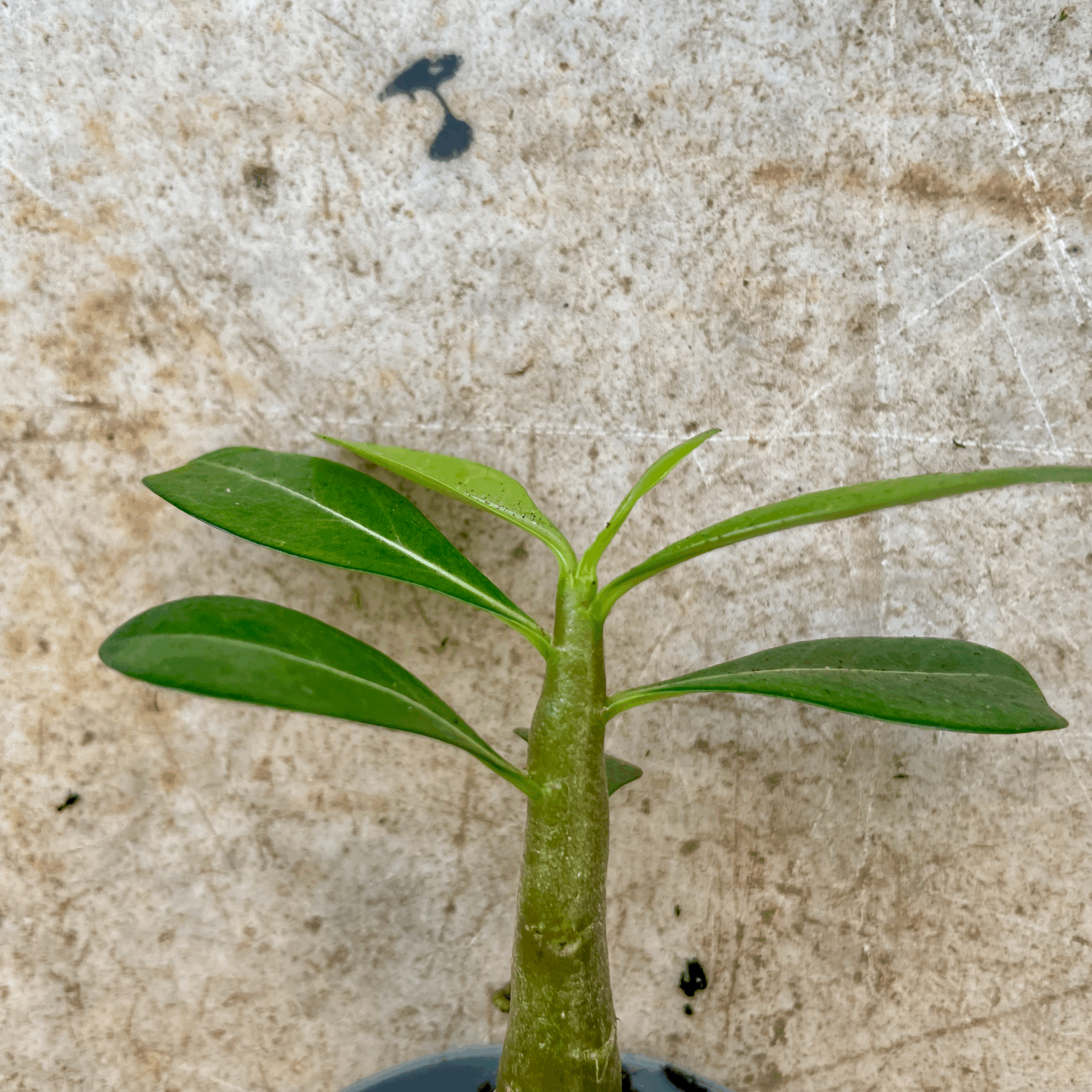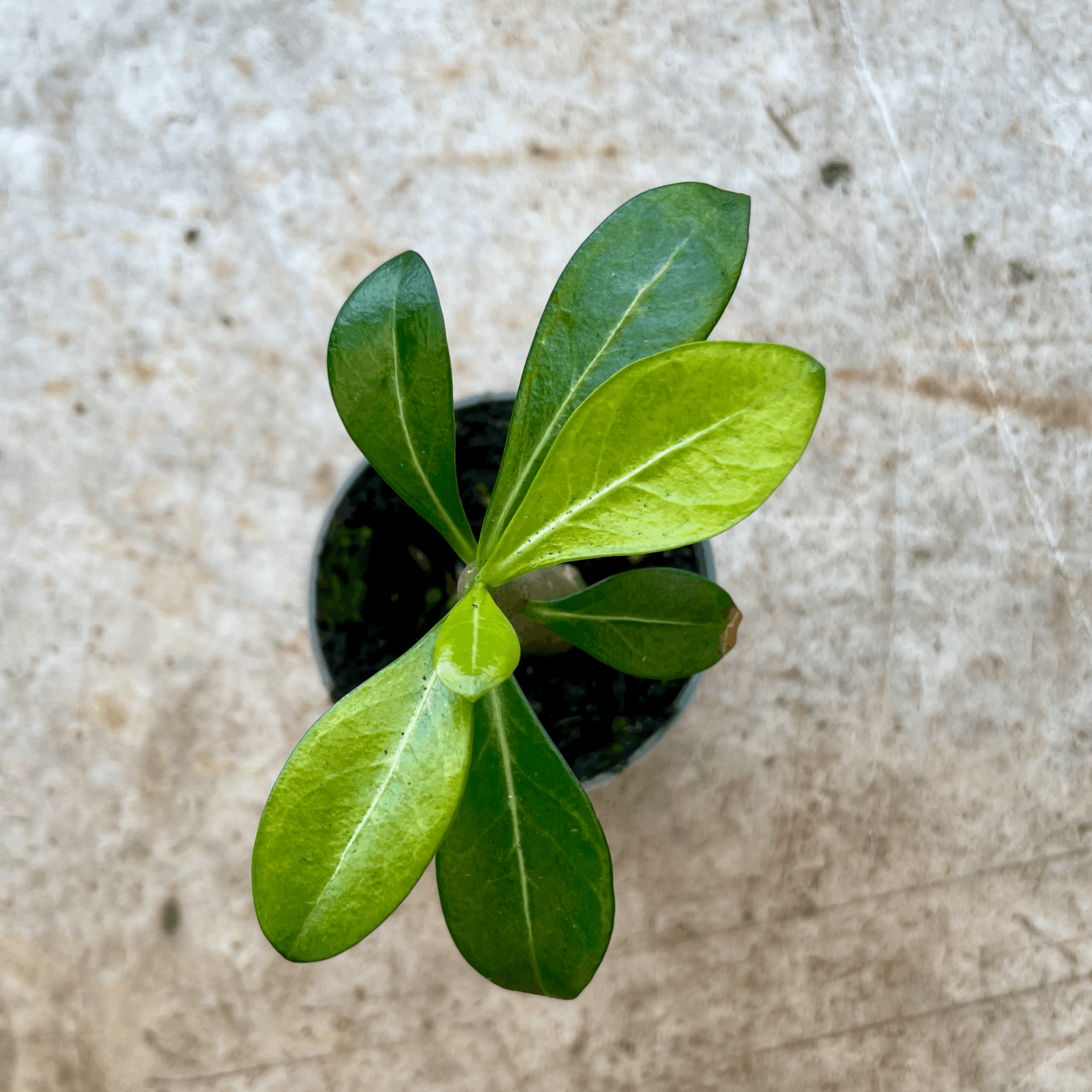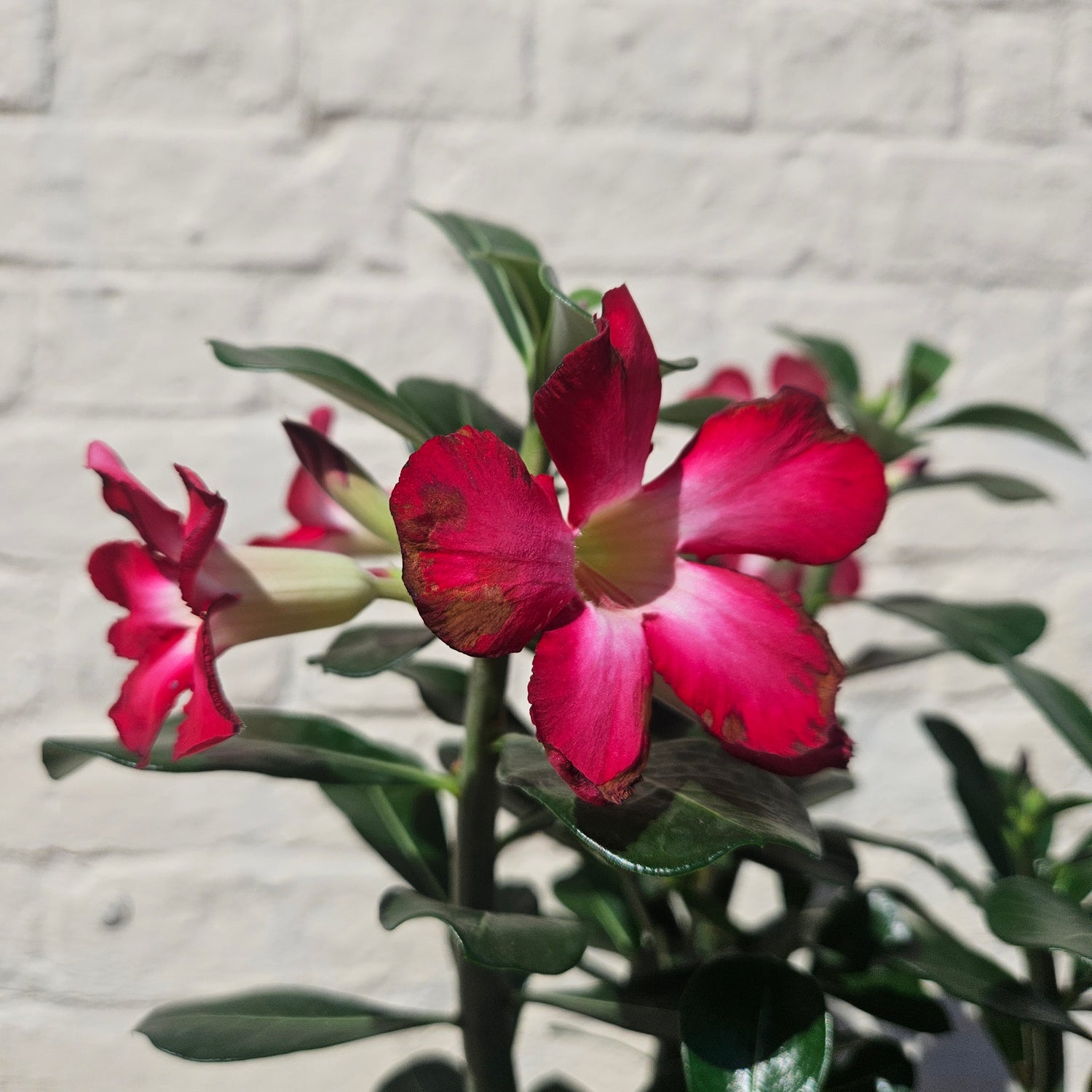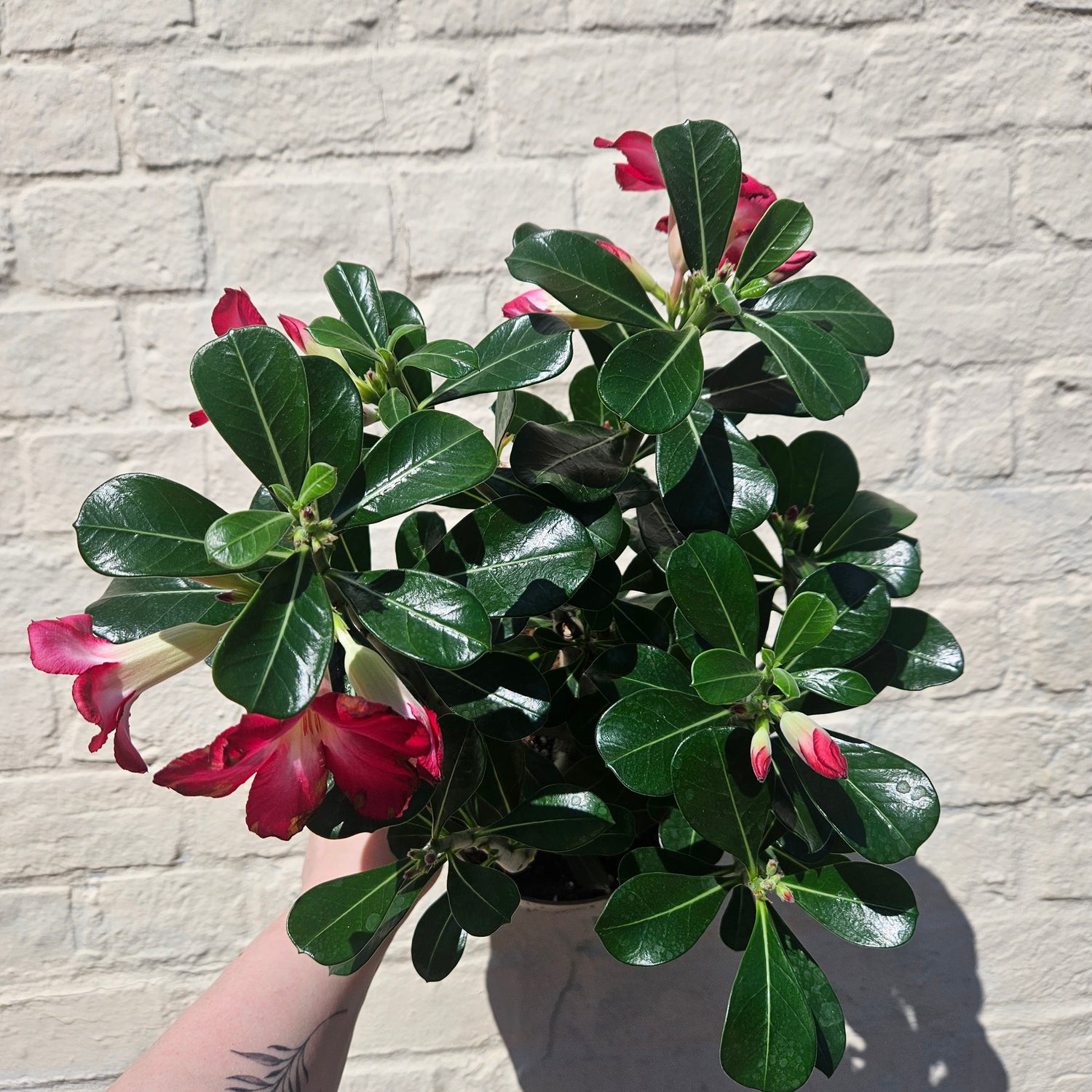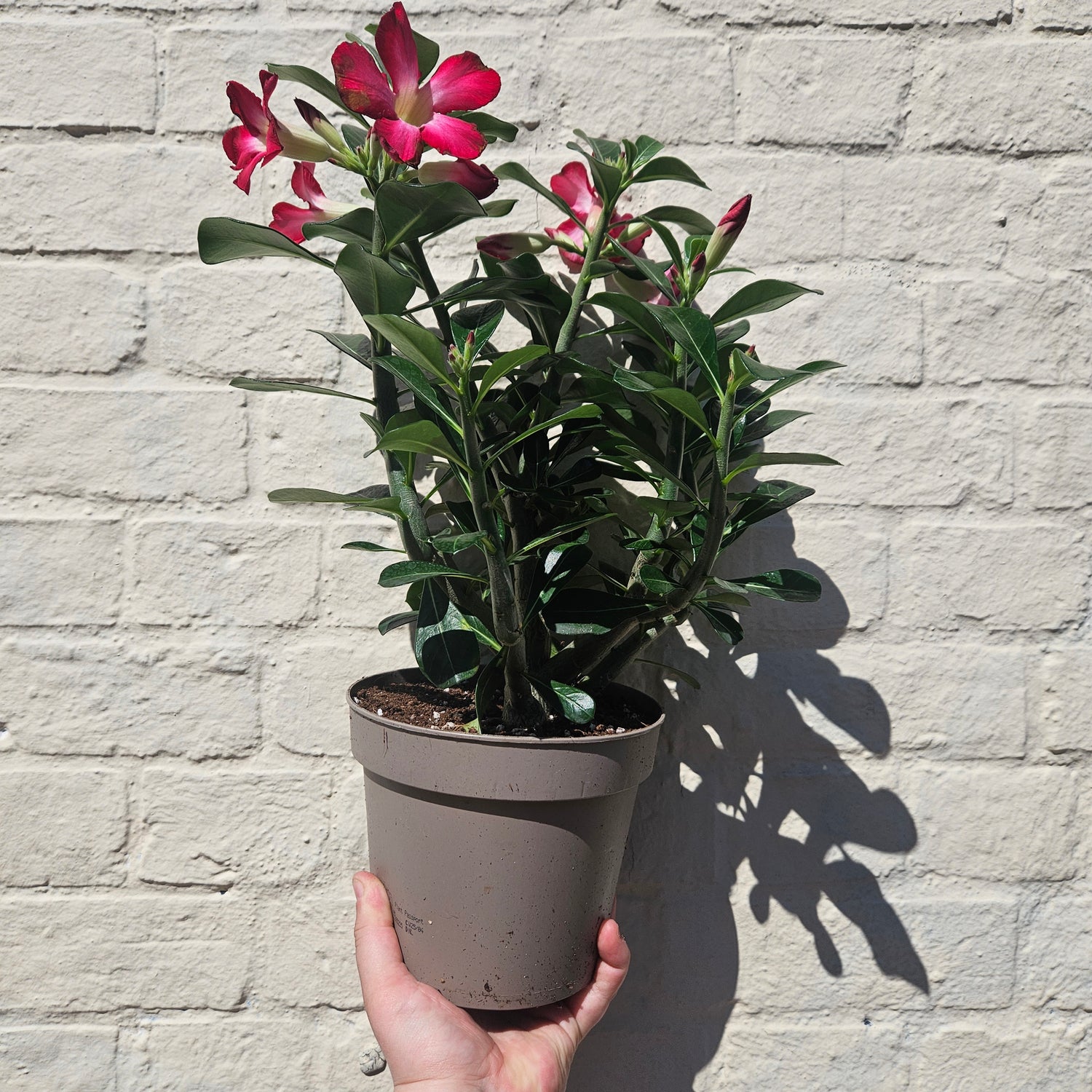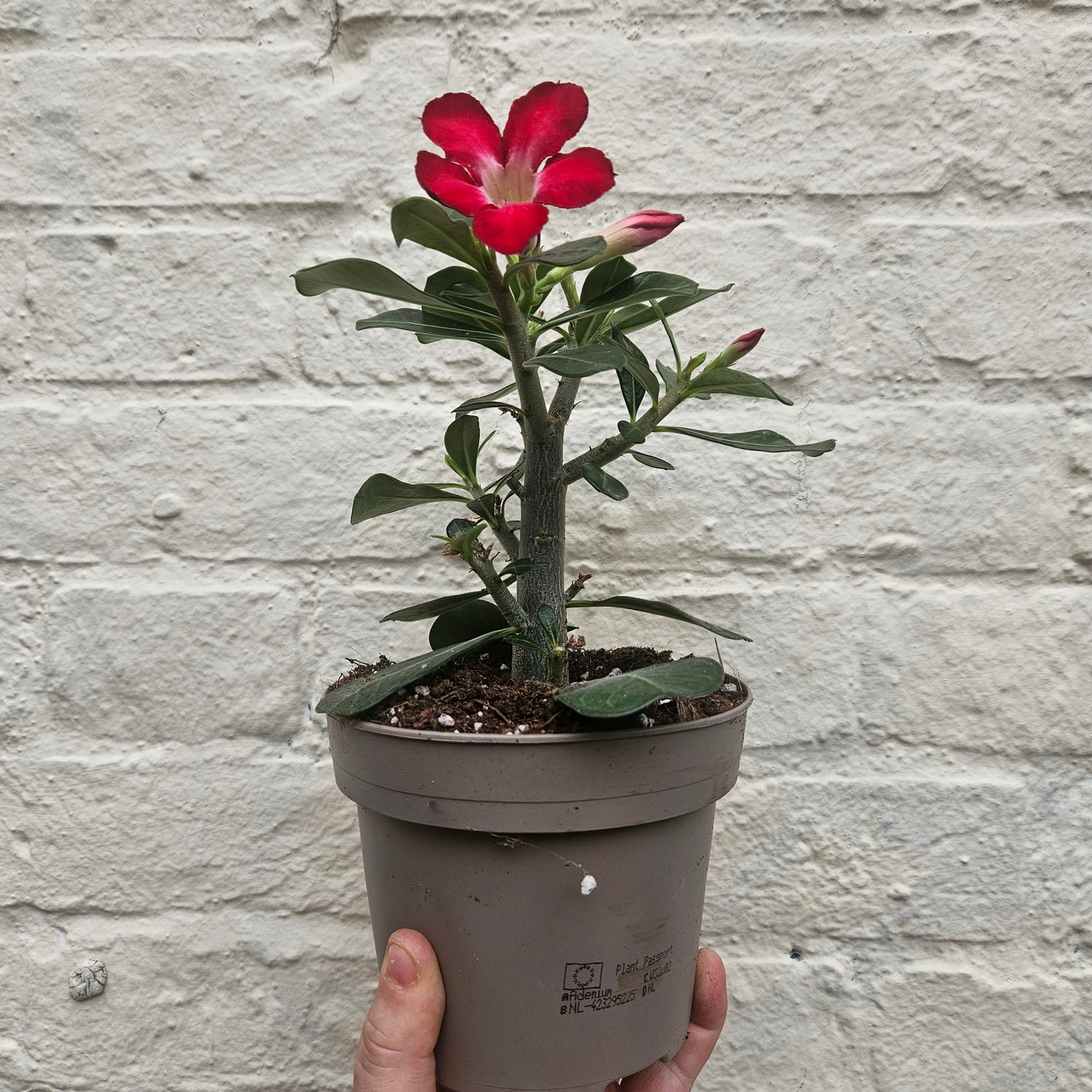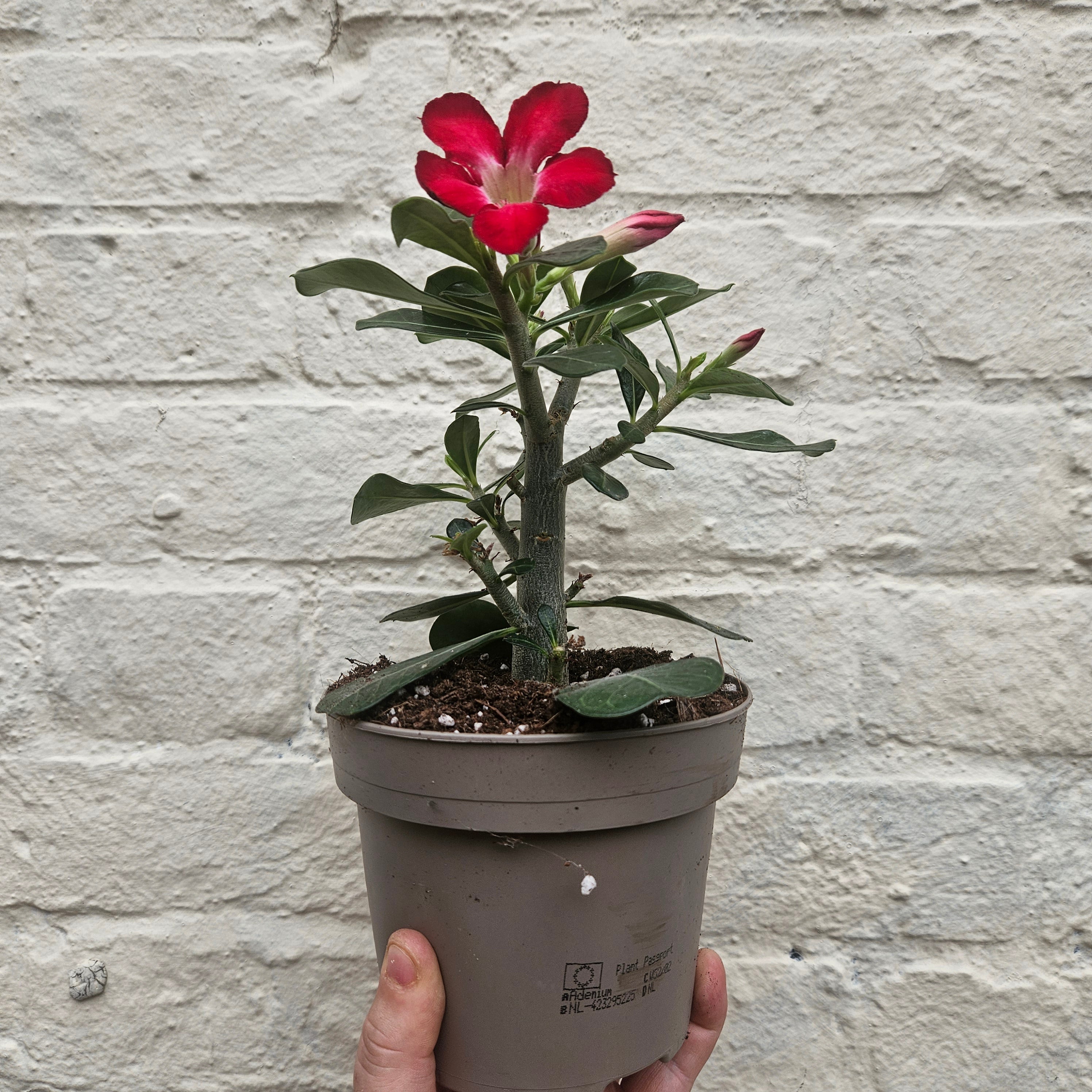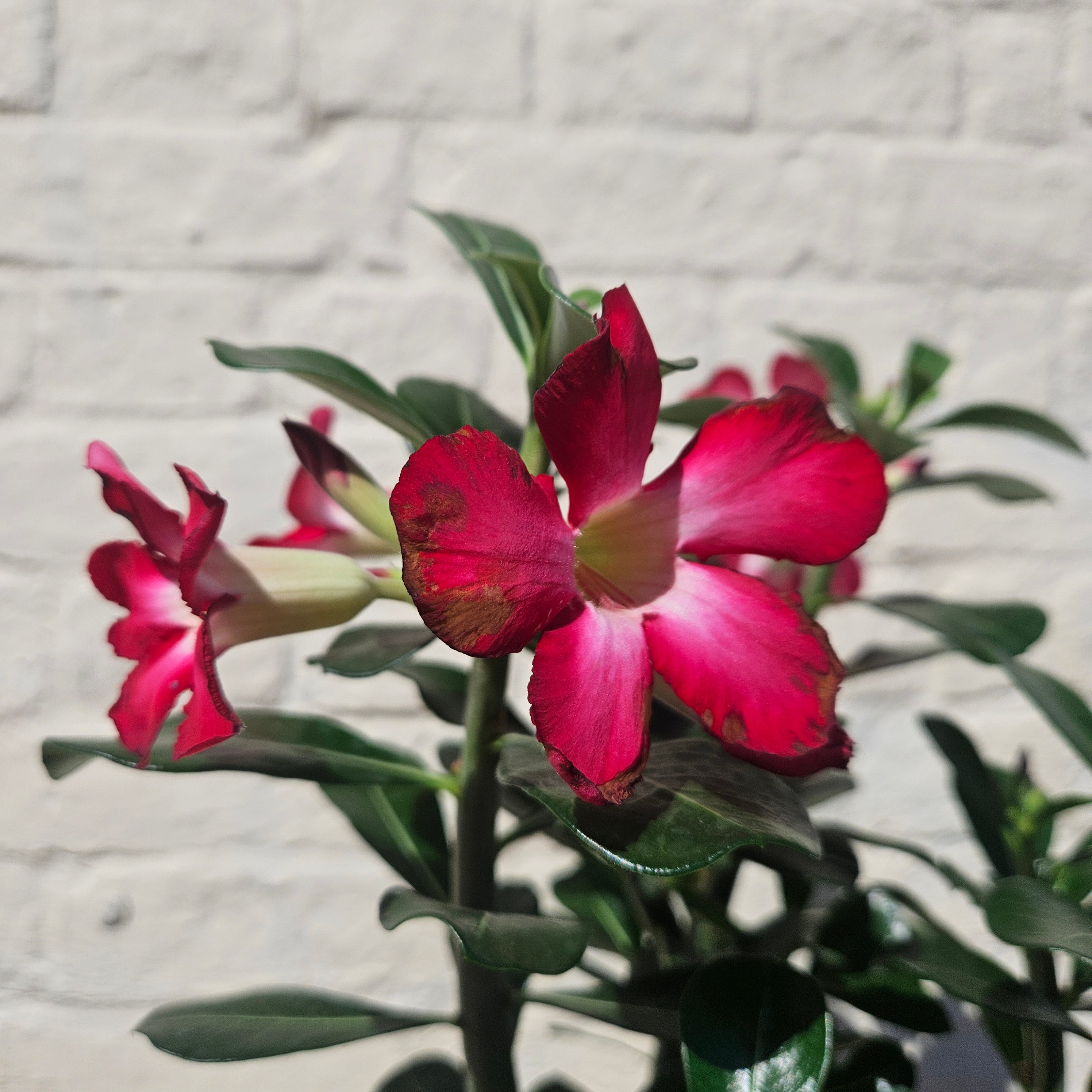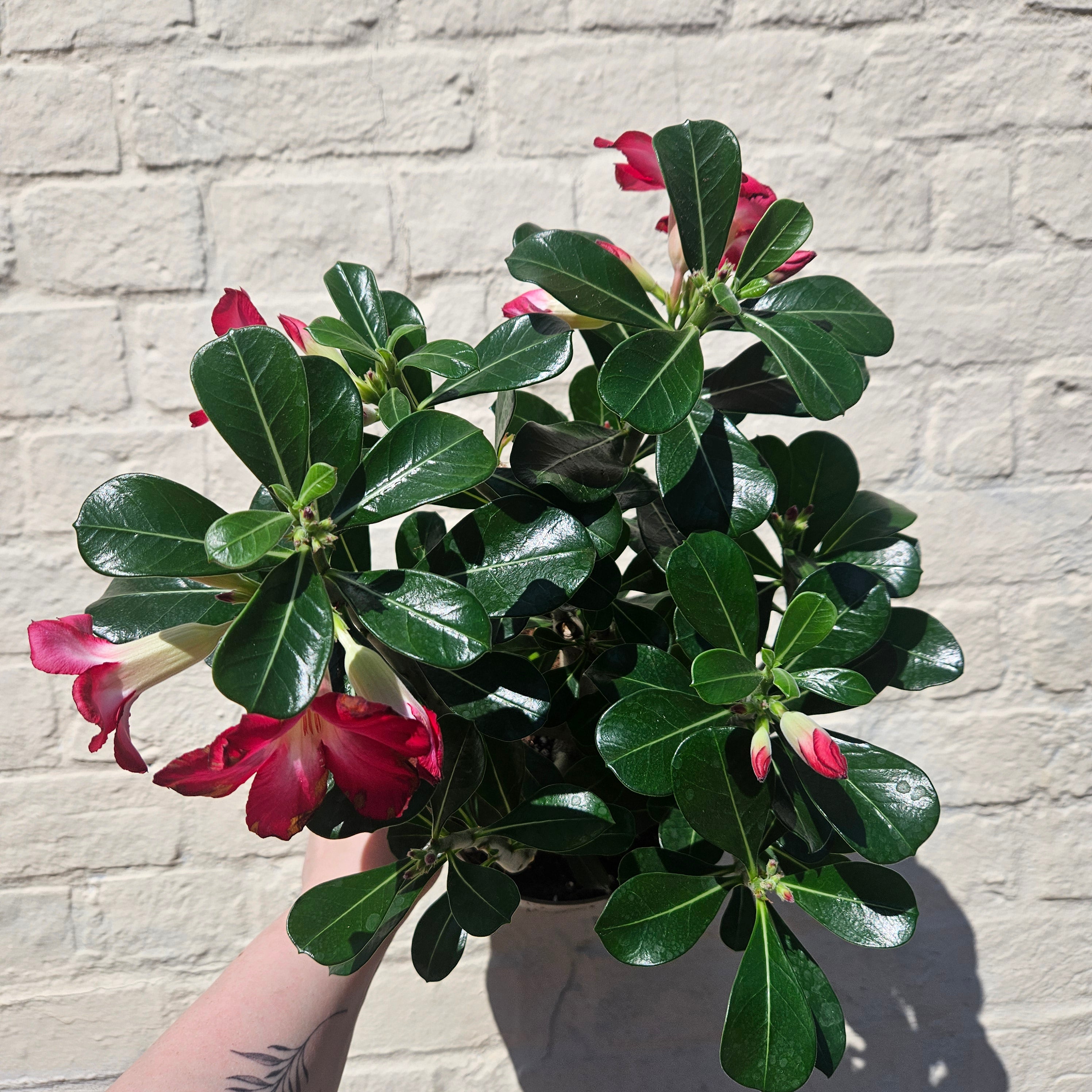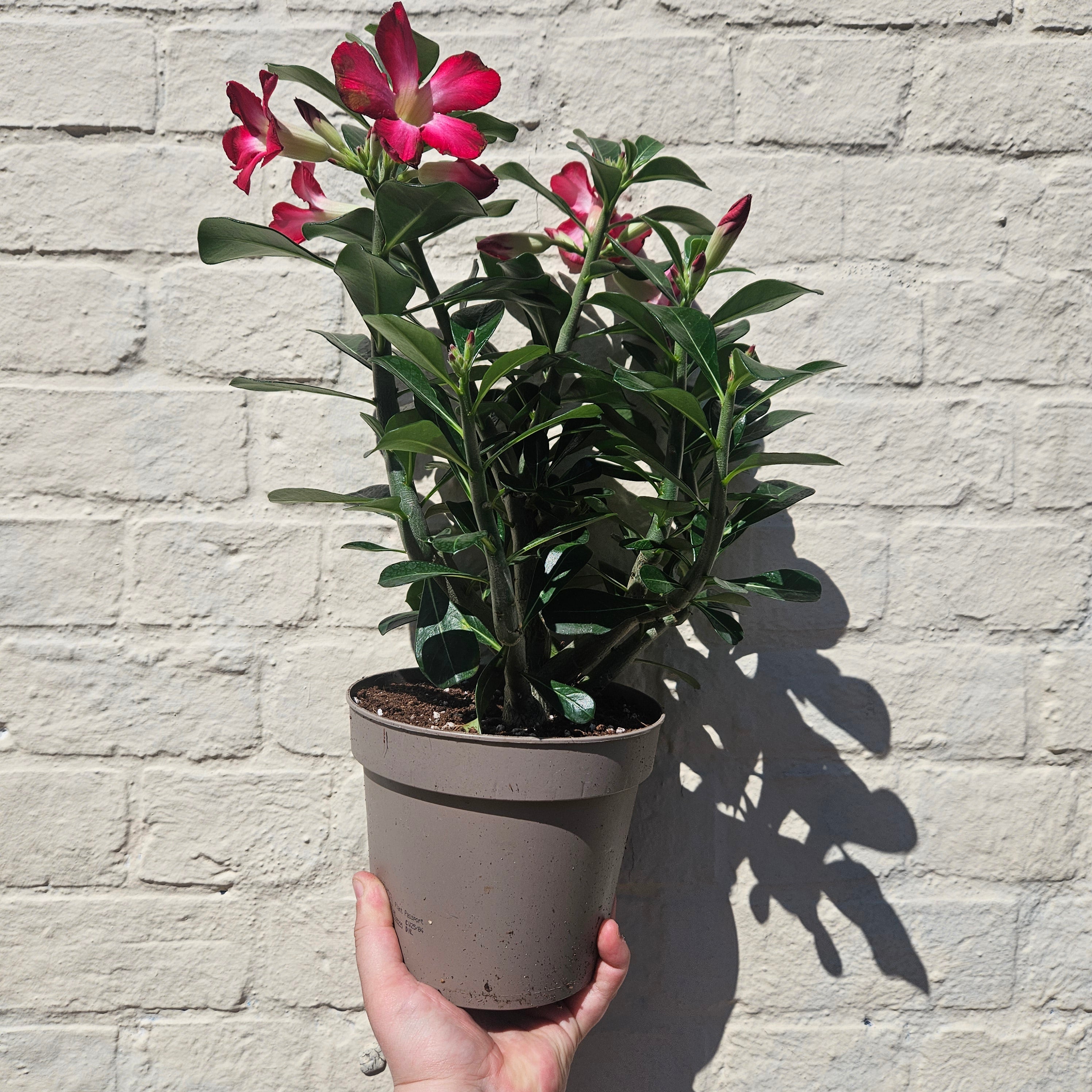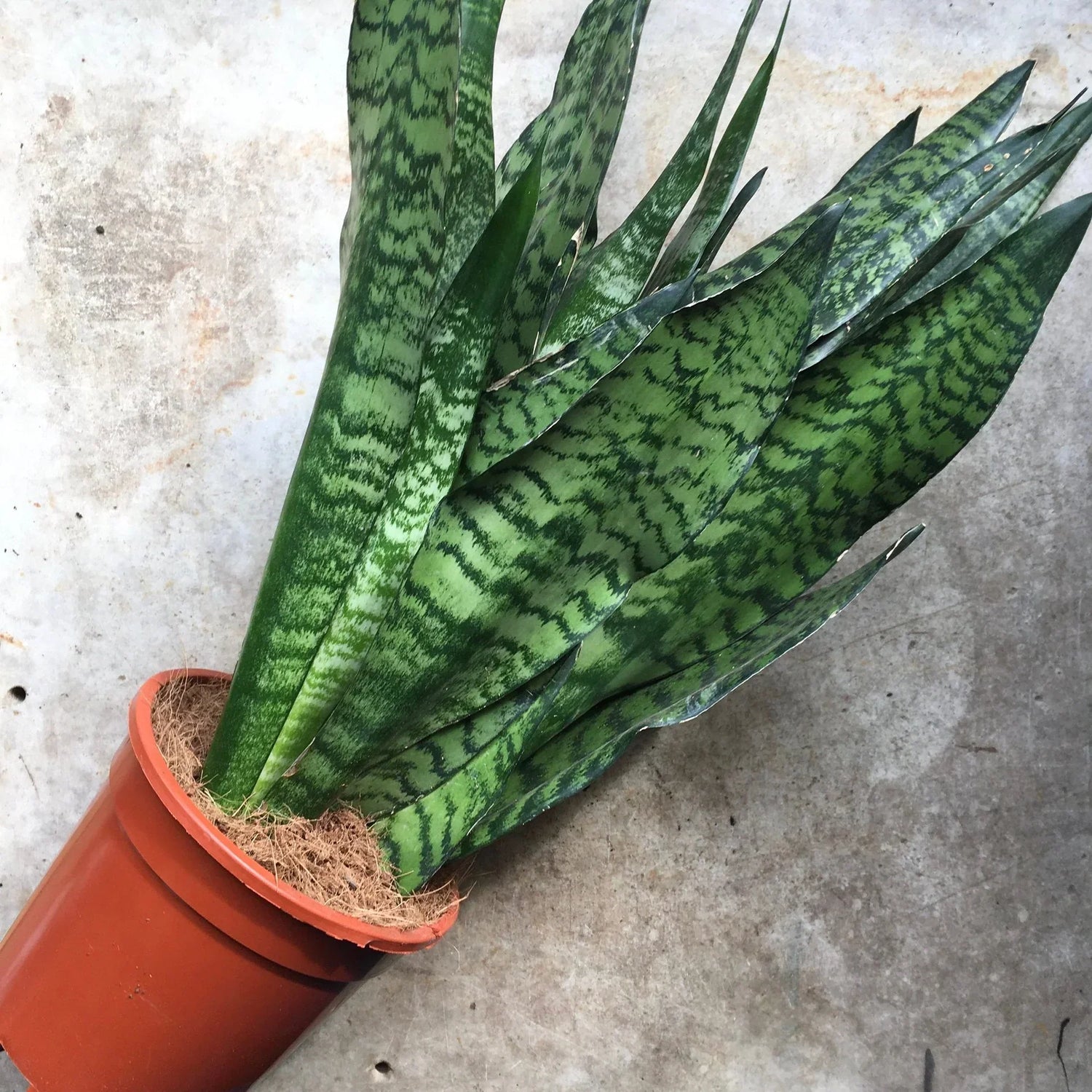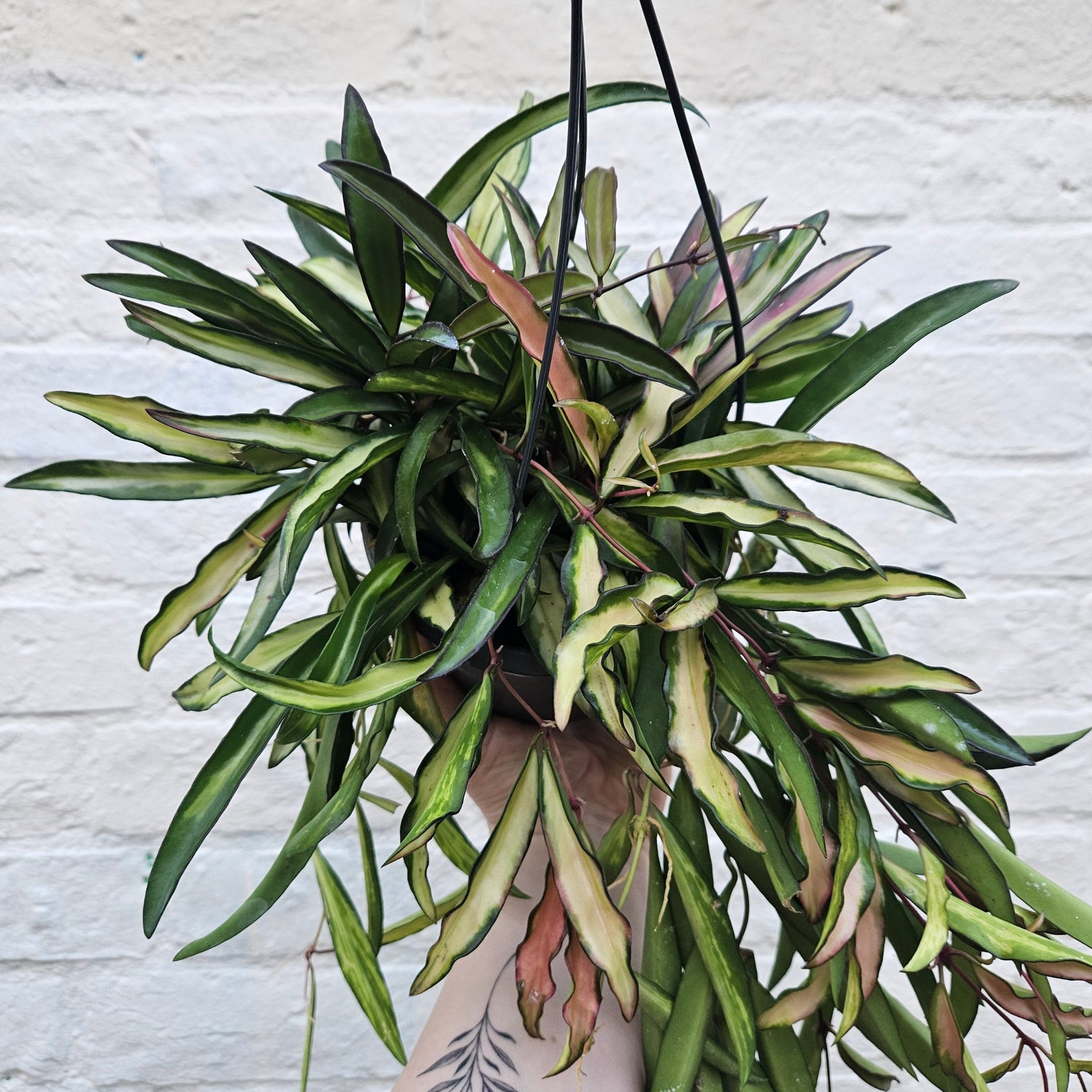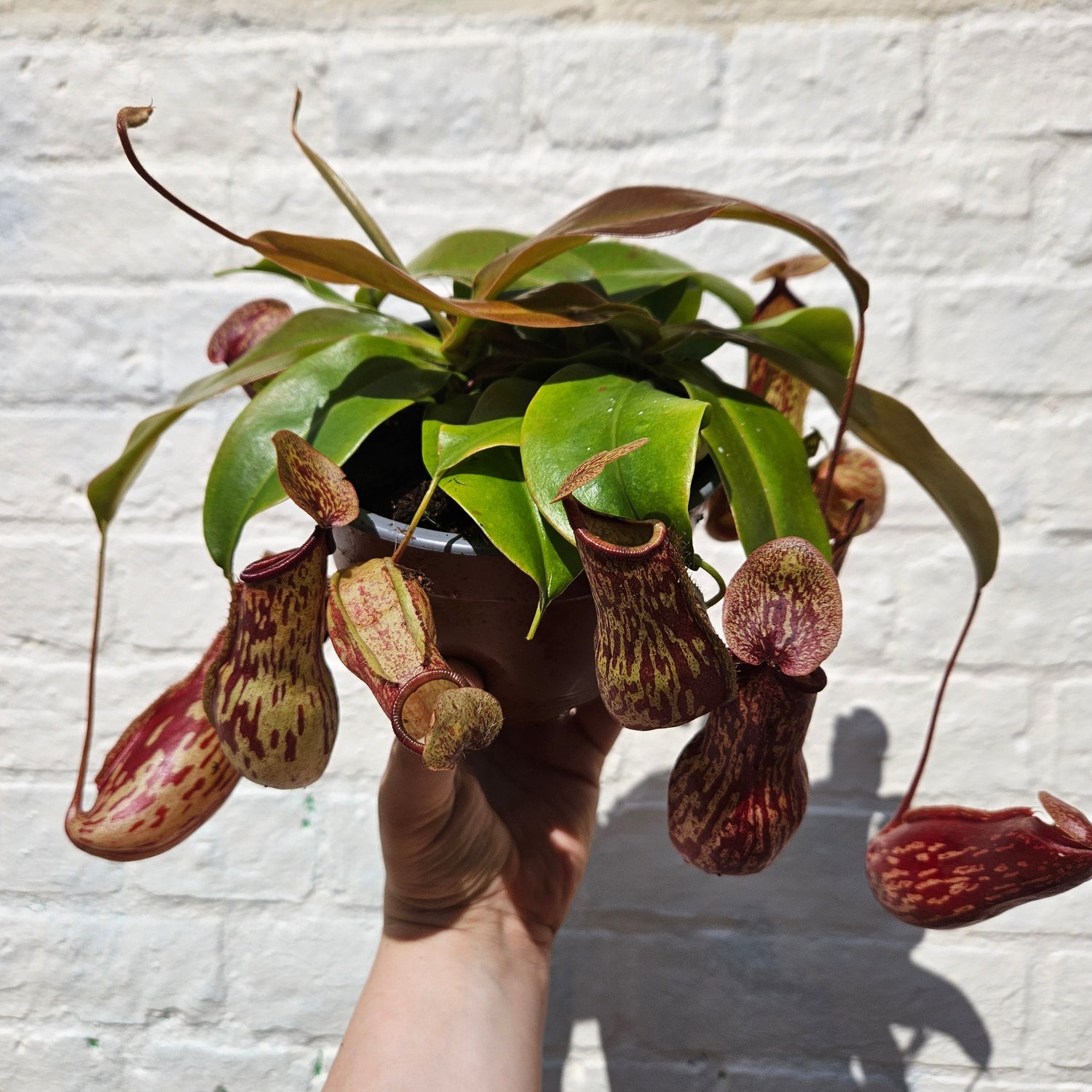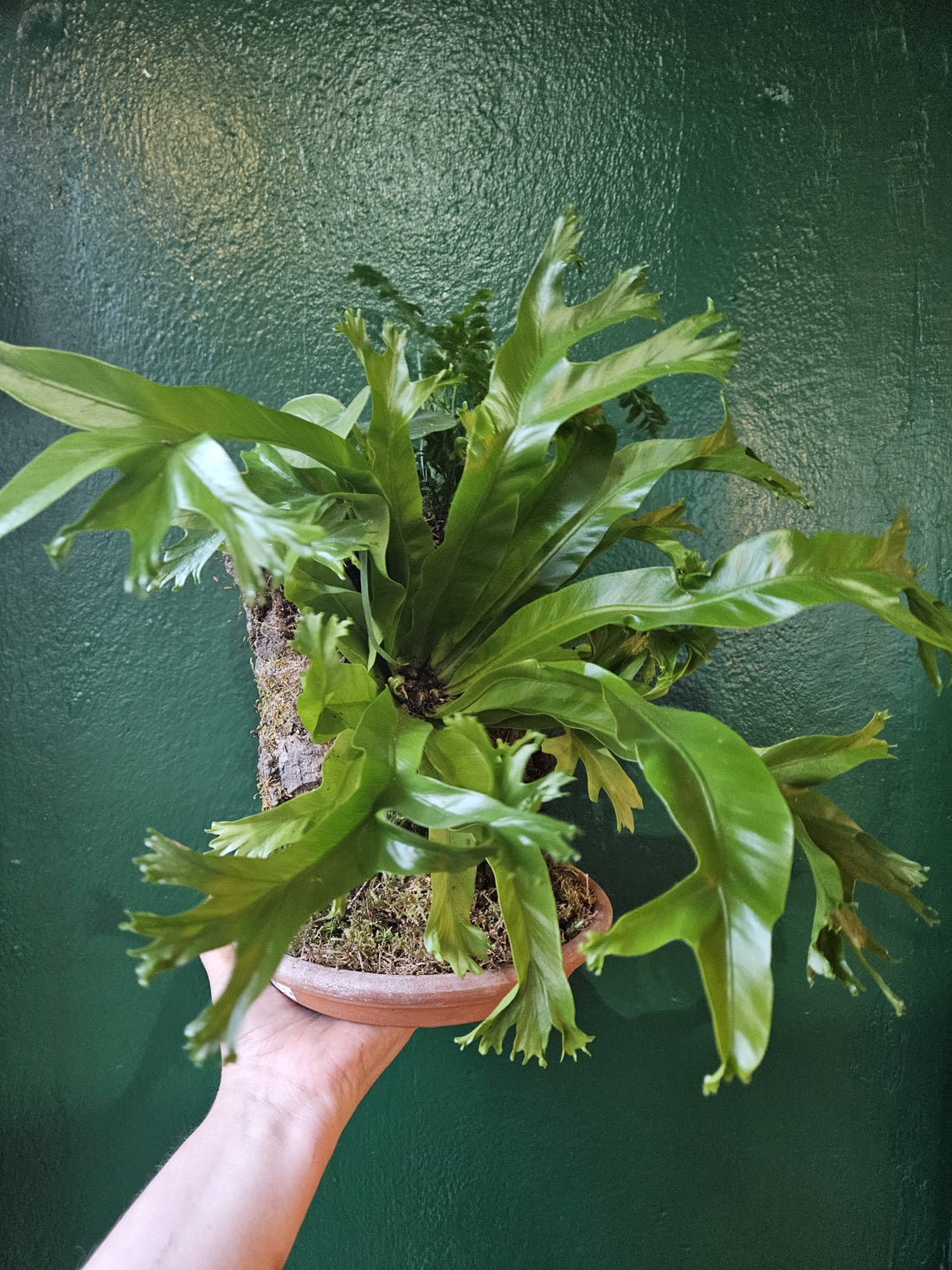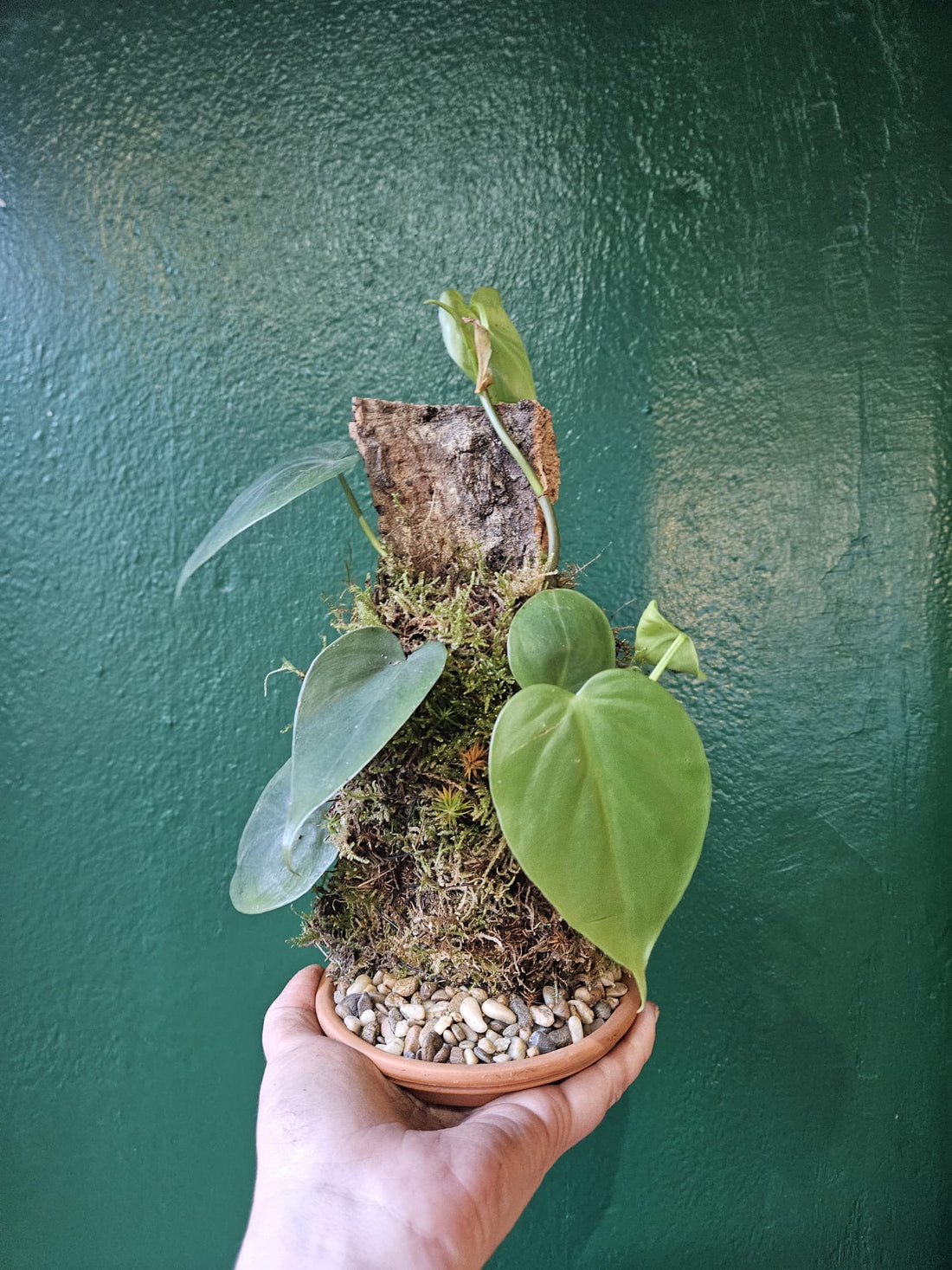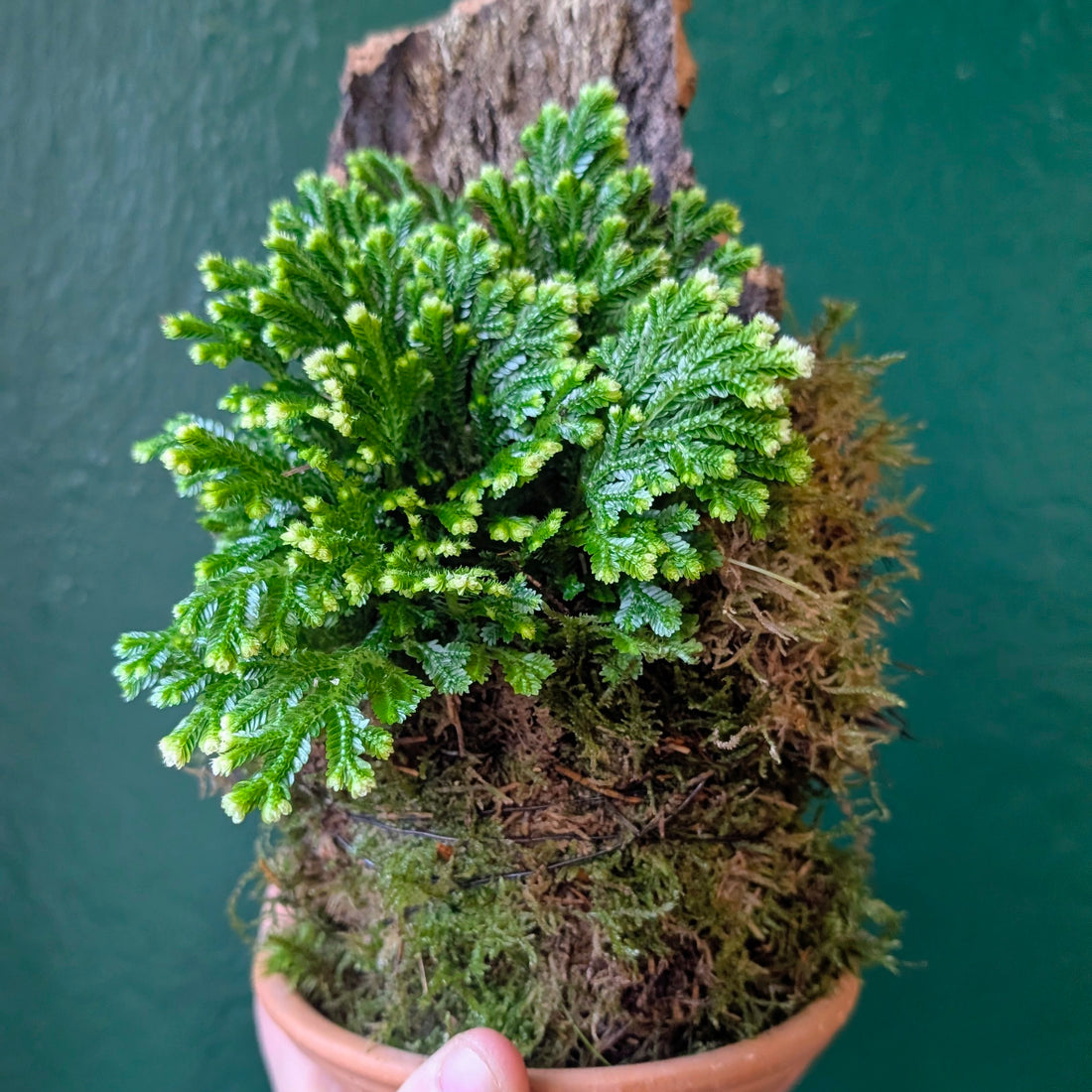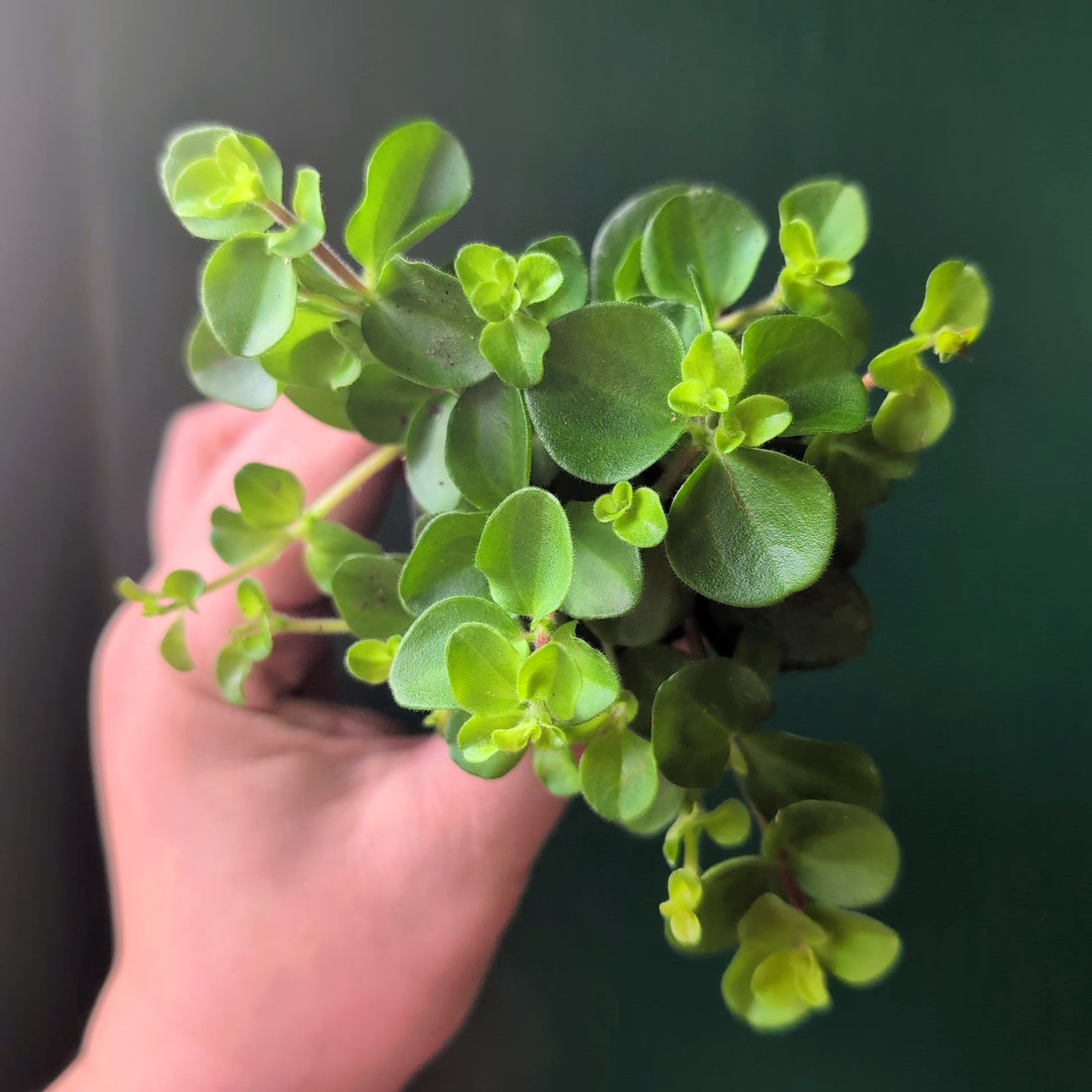Commonly known as the Desert Rose, Adenium obesum ‘Baobab’ is a striking and popular houseplant admired for its unusual, tree-like shape—reminiscent of the mighty Baobab tree, only in miniature form. Its sculptural appearance, combined with vibrant blooms and a hardy nature, makes it a favourite among indoor plant lovers.
In this comprehensive care guide, we’ll walk you through everything you need to know to keep your Adenium obesum ‘Baobab’ happy, healthy, and thriving—whether you're a seasoned plant parent or just starting your green journey.
Adenium obesum ‘Baobab’Overview
Adenium obesum ‘Baobab’, commonly known as the Desert Rose, is a member of the Apocynaceae family and is native to the Sahel region south of the Sahara, as well as parts of Eastern and Southern Africa and the Arabian Peninsula. Adapted to survive in harsh, desert-like conditions, this plant is well-suited to arid climates.
Despite its tree-like appearance, the Desert Rose is actually a succulent shrub. Its most distinctive feature is its thick, bulbous stem, known as a caudex, which stores water and varies uniquely from plant to plant. The plant produces small, glossy green oval leaves and, from April to July, it blooms with striking, trumpet-shaped flowers. These flowers are typically reddish-pink with a white centre, though cultivars are available in a wide range of colours.
Due to its low-maintenance nature and sculptural form, Adenium obesum ‘Baobab’ is a favourite among houseplant enthusiasts.
How to Look After a Adenium obesum ‘Baobab’
Light:
Adenium obesum ‘Baobab’ thrives in a bright, warm, and sunny location. For optimal growth and flowering, it should receive at least 6–8 hours of direct sunlight daily. This level of light is essential for encouraging the plant to bloom during the summer months.
A south-facing window is ideal, offering the intensity and duration of sunlight the plant needs. If natural light is limited—especially during winter or in low-light homes—consider using supplemental grow lights to keep your Desert Rose healthy and blooming.
Temperature and Humidity:
Adenium obesum ‘Baobab’ prefers warm temperatures, thriving best between 20°C and 38°C. These sun-loving plants are not frost-tolerant and should be protected from temperatures below 10°C, as cold conditions can cause damage or even kill the plant.
Desert Rose also dislikes high humidity—it naturally grows in arid, dry environments. To mimic its native conditions, avoid placing the plant in humid areas such as kitchens or bathrooms. Instead, choose a dry, well-ventilated spot where it can stay warm and dry year-round.
Watering:
As a succulent shrub, Adenium obesum ‘Baobab’ is naturally drought-tolerant and requires minimal watering. It stores water in its thick trunk, known as the caudex, allowing it to withstand dry periods with ease.
During the growing season (spring and summer), only water the plant when the soil is completely dry. Overwatering is the most common cause of problems, especially root rot, so err on the side of caution. The best way to check moisture levels is to stick your finger about an inch into the soil—if it feels dry, it's time to water.Another visual cue is the appearance of the caudex: if it begins to look slightly shrivelled, the plant may need water.
In winter, the plant enters a dormant phase and its watering needs decrease significantly. Water no more than once a month, or even less if the environment remains cool and dry. Always check the soil first—when in doubt, it’s better to be underwater than overwater.
Fertilising:
During the growing season (spring and summer), feed your Adenium obesum ‘Baobab’ with a balanced liquid fertiliser every 4 to 6 weeks. To avoid over-fertilising, dilute the fertiliser to half the recommended strength. This supports healthy growth and encourages vibrant blooms.
In the dormant winter months, the plant’s growth slows significantly, so do not fertilize during this time. Let the plant rest until growth picks up again in spring.
How to Re-pot Adenium obesum ‘Baobab’
Re-pot your Adenium obesum ‘Baobab’ when it becomes root-bound or outgrows its current container—typically every 2 to 3 years. Choose a pot one size larger, ideally terracotta or any container with drainage holes, to help prevent excess moisture buildup.
Use a well-draining cactus or succulent soil mix, which mimics the plant’s natural arid habitat. Avoid heavy or moisture-retentive soils, as they can lead to root rot.
When repotting, gently remove the plant from its pot, taking care not to damage the roots. After transferring it to its new home, wait a few days before watering to allow any disturbed roots to settle and heal—this helps reduce the risk of rot.
How to Propagate a Adenium obesum ‘Baobab’
Propagating an Adenium obesum ‘Baobab’ is an exciting way to grow new plants, Ideally done in spring or summer. Follow these steps:
Stem cutting
-
You will need clean shears, pot and cactus soil mix.
-
Choose a Healthy Stem: Select a stem that is at least 8cm long from an established part of the plant.
-
Leave these out for a day or two to allow the ends to callous over.
-
Fill a pot with your soil and in the centre make a hole. Insert the cut end in and gently press the soil around the stem.
-
Place the pot in a spot that receives bright but no direct sunlight and wait a few days before watering. Water when the soil feels dry.
-
After a few weeks, you should see the cuttings have rooted. Although quicker stem cuttings might not produce the thick bulbous caudex that seeds propagation may do.
How to Prune a Adenium obesum ‘Baobab’
Pruning your Adenium obesum ‘Baobab’ helps maintain its shape, encourages healthy new growth, and improves airflow around the plant. The best time to prune is in early spring, just before the plant enters its active growing season.Use clean, sharp pruning shears to trim away any dead, damaged, or leggy stems. This not only enhances the plant’s overall appearance but also redirects energy to stronger, healthier growth.
Winter dormancy
During the colder winter months, Adenium obesum ‘Baobab’ enters a natural dormant phase. Growth will slow down, and it's normal for the plant to drop its leaves as it conserves energy. Watering should be reduced to once a month or even less, depending on conditions. Place the plant in a warm, bright spot, avoiding cold draughts or sudden temperature changes. As spring arrives and new growth begins to appear, you can gradually resume your normal care routine, including more frequent watering and feeding.
How Often Should I Water a Adenium obesum ‘Baobab’
Watering frequency depends on various factors like temperature, location and pot size. As a general rule, check the soil and water when it's completely dry. Water less in winter and more frequently during the growing season.
Why Are My Adenium obesum ‘Baobab’ Going Yellow/losing leaves
-
Yellowing leaves: on your Adenium obesum ‘Baobab’ can be caused by several factors, the most common being overwatering, poor drainage, or pests. If you notice yellow leaves, check the soil and caudex for signs of excess moisture or rot. Adjust your watering routine and re-pot the plant if necessary, using fresh, well-draining soil. Additional signs of overwatering include stunted growth and a soft or mushy caudex. However, not all yellow leaves are a cause for concern—sometimes they are simply old leaves that the plant naturally sheds. These can be gently removed by hand. If pests are present, such as aphids or spider mites, treat the plant promptly with an appropriate insecticidal spray or natural pesticide to prevent further damage.
-
Losing leaves: If your Adenium obesum ‘Baobab’ is losing leaves outside of its normal winter dormancy, it may be a sign of under-watering. In extended periods of drought, the plant will naturally shed leaves to conserve moisture. Review your watering routine and ensure you're watering thoroughly each time the soil is completely dry. Leaf drop can also result from temperature fluctuations, such as moving the plant, sudden temperature dips, or exposure to cold draughts. To avoid stress, place your plant in a sunny, south-facing window where it receives consistent warmth and plenty of light. Stable, warm conditions are key to keeping your Desert Rose happy and leafy.
Are Adenium obesum ‘Baobab’ Poisonous to Cats and Dogs?
Adenium obesum ‘Baobab’ is considered toxic to both humans and pets. The plant contains a sap rich in cardiac glycosides, which can cause nausea, vomiting, and irregular heart rhythms if ingested. Always wear gloves when pruning or repotting, as the sap can also cause skin irritation upon contact. To ensure safety, keep your Desert Rose out of reach of children and pets, or consider choosing a pet-friendly alternative if you have curious animals at home.
With these expert tips, you're well-equipped to care for your Adenium obesum ‘Baobab’ and enjoy its lush beauty in your home. Happy Desert Rose growing!
